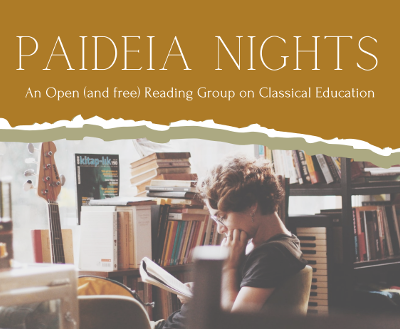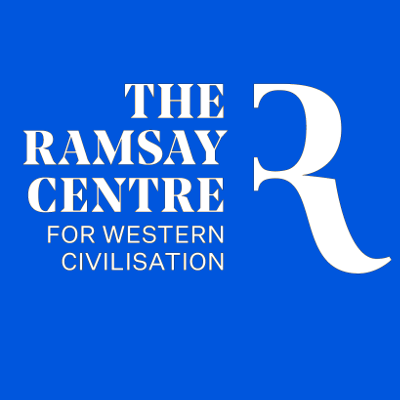The Italian Renaissance is rightfully recognised as having rediscovered some of the glory of Ancient Greece and Rome. It did not look back to the past impartially but interpreted it through, and ultimately married it with, a burgeoning Christian humanism. Much of the content of these movements forms the basis of what we understand as Western liberal arts (classical) education, and they arguably found their climax in the eighteenth century through another fusion: the French Enlightenment as expressed in neoclassical art.
It is fair to say that contemporary art deliberately and provocatively protests against the objectivity of meaning. Its subject matter is often mundane, occasionally ludicrous, and rarely seeks to propose a moral viewpoint. For this reason it is worth considering a clear counterpoint to post-modern art in neoclassicism’s greatest contributor, Jacques-Louis David (1748-1825).
Intellectually, David was reared in the Enlightenment ideals and stoic patriotism of the late 1700s. He received a first-rate classical and artistic education, which were exemplified through dozens of works; initially, at the Royal Academy (today’s Louvre) but particularly to considerable acclaim during the French Revolution. During the Revolution, David applied his creative talents to illustrate on canvas (one might even argue “propagandise”) the importance of human rights legislation and purer virtues that would assist the renewal needed in the old regime’s fin de siècle.
Rather than providing a purely biographical piece, let’s instead study a handful of David’s more significant paintings and draw from them some lessons on how art and classical learning can be used as educational tools.
The first is David’s masterpiece, Oath of the Horatii (1784, figure 1), which stunned both artists and patrons alike when displayed at the Louvre the mid-1780s. It depicts a Roman legend (sourced from Livy and Dionysius’s Roman Antiquities) where two families: the Horatii from Rome and the Curiatii from Alba Longa, prepare for a lethal duel to end the feuding between their respective cities. The surviving sons of the upcoming contest will be declared victors of the war. The painting’s focus is the resolute Horatii oath to die defending the Roman state and people, demonstrated superbly via the brothers’ unified gaze and salute to the sword, with one’s arm clasped around his siblings’ torsos like a fasces confirming their unyielding stance. Here, we can see how David has brought together his favourite classical themes and virtues, which he will continue to explore in future works. Specifically: the value of firm, pure and self-sacrificial patriotism; the fortitude to pursue a noble cause despite opposition; and stoic, moral rectitude (emphasised by his use of dark tones and stark lighting), all being recommended to the viewer to adopt. This is art as pedagogy.
David would employ this technique again in his incomplete Tennis Court Oath (1790-1794, figure 2). The picture’s imagery and message are strikingly similar. On 20 June 1789, the representatives of the National Assembly had all (bar one member) sworn not to separate until a constitution was written for the French kingdom “to bring about the regeneration of public order”. In doing so, they defied the king and endangered their lives (one recalls Mirabeau’s emphatic: “We are here by the will of the people and will leave only by the force of bayonets!”). Yet, for the painter, these men (some of them his close friends) were heroes for the Revolution in much the same way as the Horatii were to Rome, and were to be admired and emulated.

|

|
A further pairing appears in David’s portrayal of martyrdom. The Death of Socrates (1787, figure 3) tells the story of the philosopher’s execution (found principally in Phaedo) under orders by the Athenian Assembly. Socrates, a paragon of virtue and reasoned thought, is at the point of drinking hemlock poison, having refused the opportunity to escape and evade legal punishment. His death is a lesson to his students (both Plato and Crito are shown) and to us of the need to obey the rule of law, be convicted in moral character, and be assured of the afterlife. The calm look on Socrates’ face (contrasted with the agonised expressions of those around him) and his upstretched hand demonstrate his willingness (indeed, joy) in returning to be with God. St Paul mirrors a similar attitude when professing he “would rather be away from the body and at home with the Lord” (2 Cor 5:8).
Here is Socrates the martyr for truth and goodness, accepting death under orders of a corrupt government. Similarly, for David, was the assassination of the journalist Jean-Paul Marat. Like the artist, Marat was an ardent Jacobin and member of the Convention. He was killed by a young woman, Charlotte Corday, on 13 July 1793, for being in her eyes (and likely in our own) a bloodthirsty monster. Still, he was a hero to many. In The Death of Marat (1793, figure 4), the revolutionary is dead in his bath with an almost Christ-like pose. The note gently resting in his left hand is an appeal to Marat’s generosity in supporting someone in need, a ruse to put him off his guard before the deadly blow is struck. (The historical circumstances around the assassination are somewhat different and certainly some whitewashing has been done here.) Like Socrates, Marat has given his life for truth and goodness in his fight during the French Revolution to defend the poor and oppressed at the hands of evil.
These works all illustrate the virtue David perceived in dying for one’s nation and principles. It was not the act itself but the belief in a higher power that ensured justice would be served in the afterlife. When his close friend, Maximilien Robespierre, railed against the atheism and de-Christianisation of 1794, arguing: “Death is no eternal sleep… death is the beginning of immortality,” he could have echoed Socrates himself. And with Robespierre, David would offer to “drink hemlock” when the former was arrested by the Convention before being sent to the guillotine. The two were also involved in planning and executing the Cult of the Supreme Being festival, as Carlyle, in his typically ponderous style, described it: Incorruptible Robespierre, not unlike the Ancients, as Legislator of a free people will now also be Priest and Prophet… He is President of the Convention; he has made the Convention decree… the “Existence of the Supreme Being” and likewise “the consoling principle of the Immortality of the Soul”. These consolatory principles, the basis of rational Republican Religion, are getting decreed; and here, on this blessed decadi [a day of the new revolutionary calendar], by the help of Heaven and Painter David, is to be our first act of worship.

|

|
Yet, David was not blind to the ambiguous nature of patriotic warfare, acknowledging the personal loss and tragedy that often accompanies it. This ambivalence is best portrayed in The Lictors Bring to Brutus the Bodies of His Sons (1789, figure 5). Another Roman subject, it paints the scene of Lucius Junius Brutus, founder of the republic, contemplating his order to execute his own sons who were planning to restore monarchical rule. Again, Brutus’s stoicism, rectitude and sacrifice are contrasted with the uncontrollable emotion of the female family members, whose excess of sentiment threaten the steadfastness needed for civic virtue. Nevertheless, a shadow is cast over the leader, and his somewhat tortured physiognomy and contorted limbs suggest not all is well. Love of nation might result in killing one’s very kith and kin – it is not without a cost.
We can compare this with other works of David’s from the period of the French Revolutionary Wars (1792-1802), which led to civil war and Napoleon’s subsequent conquest, when the sacrifice of dying for one’s country was becoming increasingly questioned. The clearest example is The Intervention of the Sabine Women (1799, figure 6). In the painting, Hersilia, comes between her husband (Romulus) and her father (Titus Tatius), in an effort to end the violence destroying those whom she loves. The death of innocence caused by war is palpably felt by the women bearing their breasts in dissent, the naked and vulnerable children in the foreground (one who looks directly at the viewer), and especially the infant who is raised by his mother as a sacrificial victim. “It is enough!” the painter seems to cry out, and may reflect the fact David was himself imprisoned for supporting Robespierre when he began working on this piece, at a time when France was in conflict with practically all of Europe.
David challenges us to truly consider our commitment in fighting for such pyrrhic victories. It is aptly and finally displayed in Leonidas at Thermopylae (1814, figure 7). Like the previous painting, we again have a foreground character stare intently at the audience, contemplating his impending doom. This time it is Leonidas, the Spartan king, whose soldiers were hopelessly outnumbered by the Persians at the Battle of Thermopylae (480 BC) but whose brave and suicidal defence at the pass prevented the Greeks from being overwhelmed by their enemy. Once more, the artist is speaking to his fellow Frenchmen. It is more inspirational than the Sabine example – apparently, Napoleon criticised David for that work’s ominous tone – but tells a similar tale. Heroic courage and patriotism are virtues that we should seek to inculcate in ourselves and our citizens, however, they are not easily won. David likely looked upon a France much changed since the Revolution began in 1789; many of his friends had died, the country had been plunged into foreign and civil war, and Napoleon now ruled as emperor over the former republic. He may have questioned whether it was worth it or, more likely, believed the act of virtue justified even an unfortunate outcome.


|

|
The art of Jacques-Louis David shows us how classical learning can combine with moral philosophy to become an important means of public education. A picture does tell a thousand words, and if anything, perhaps we can appreciate their value in teaching virtue and wisdom to our children.







